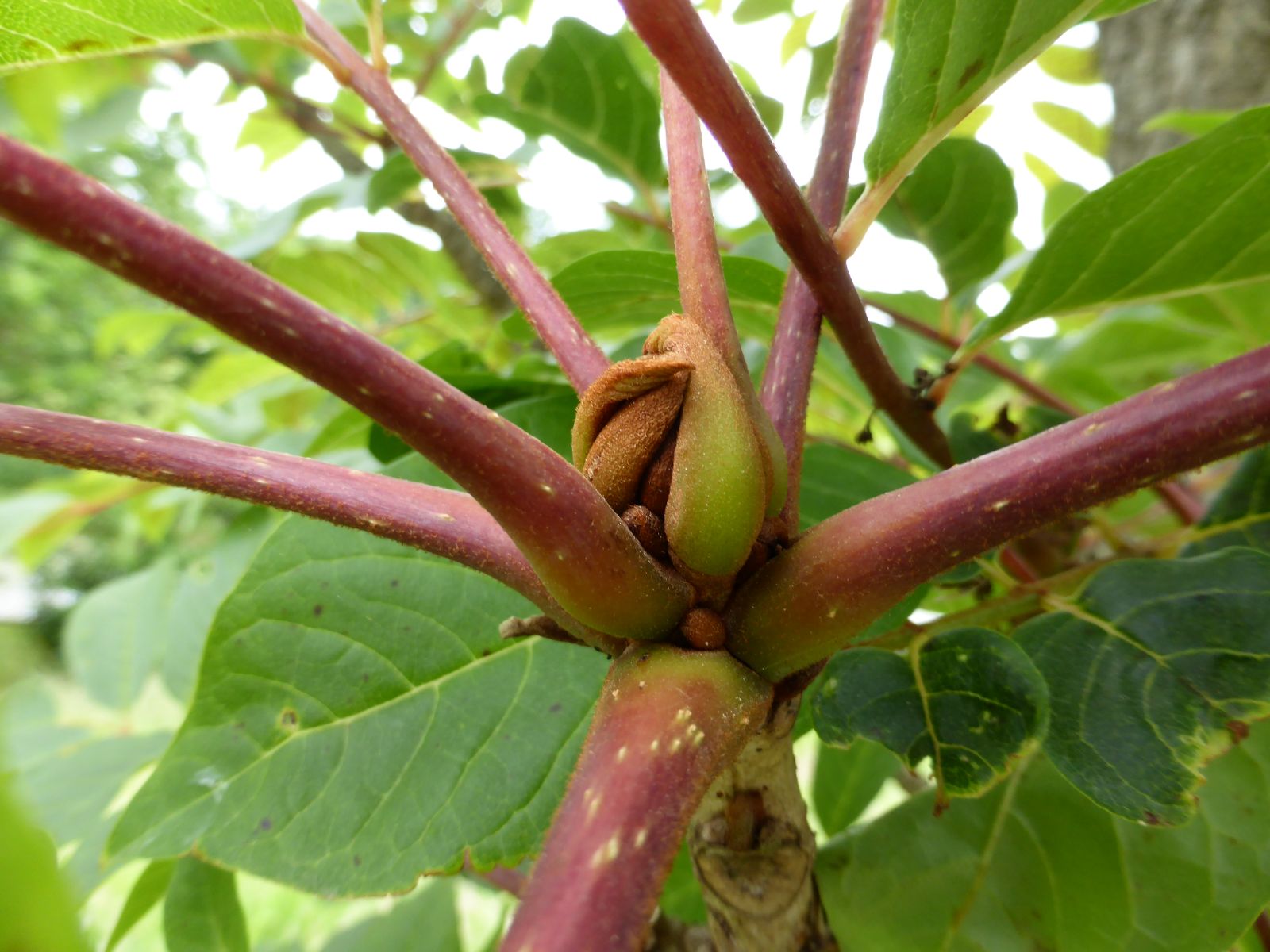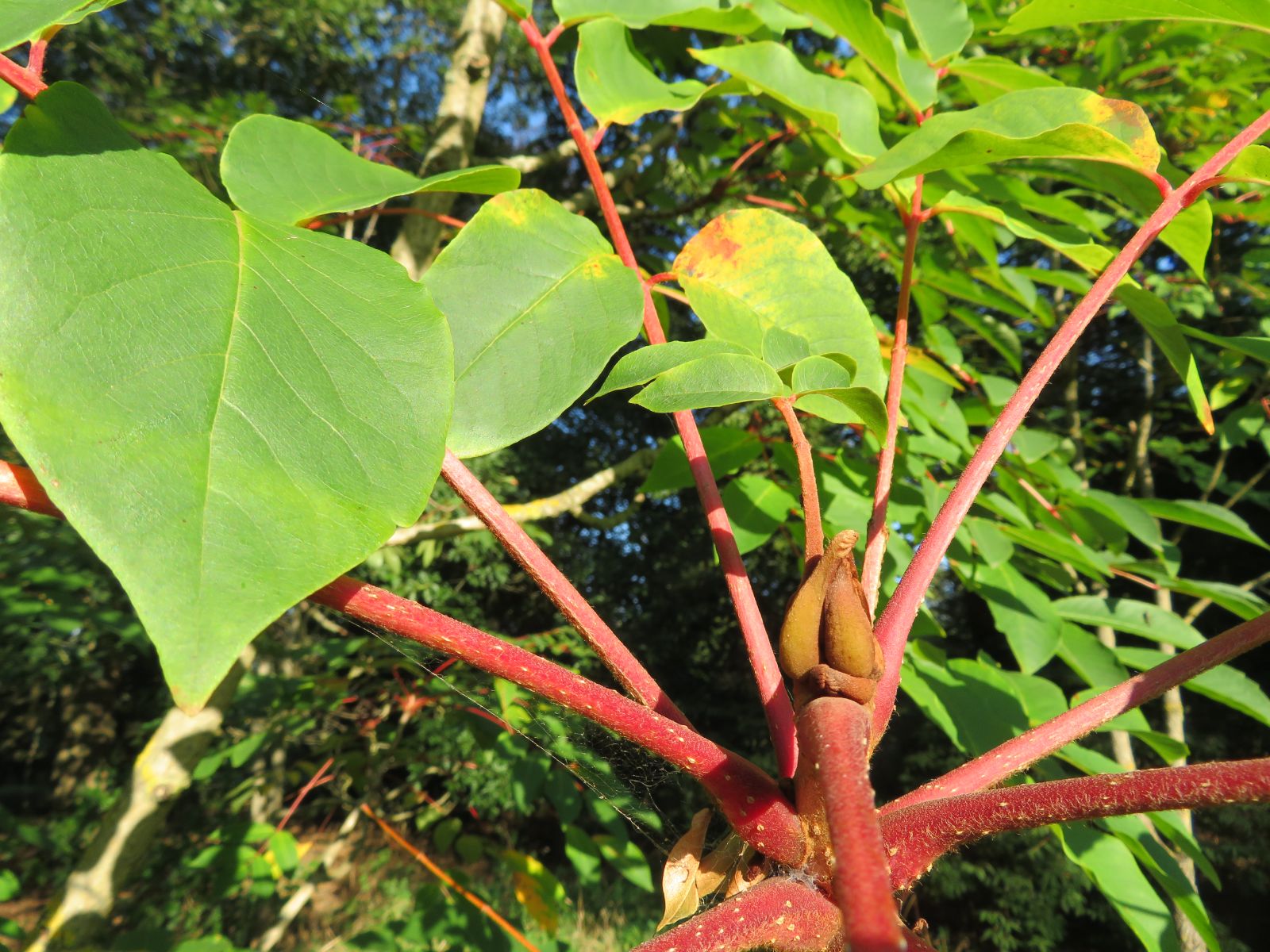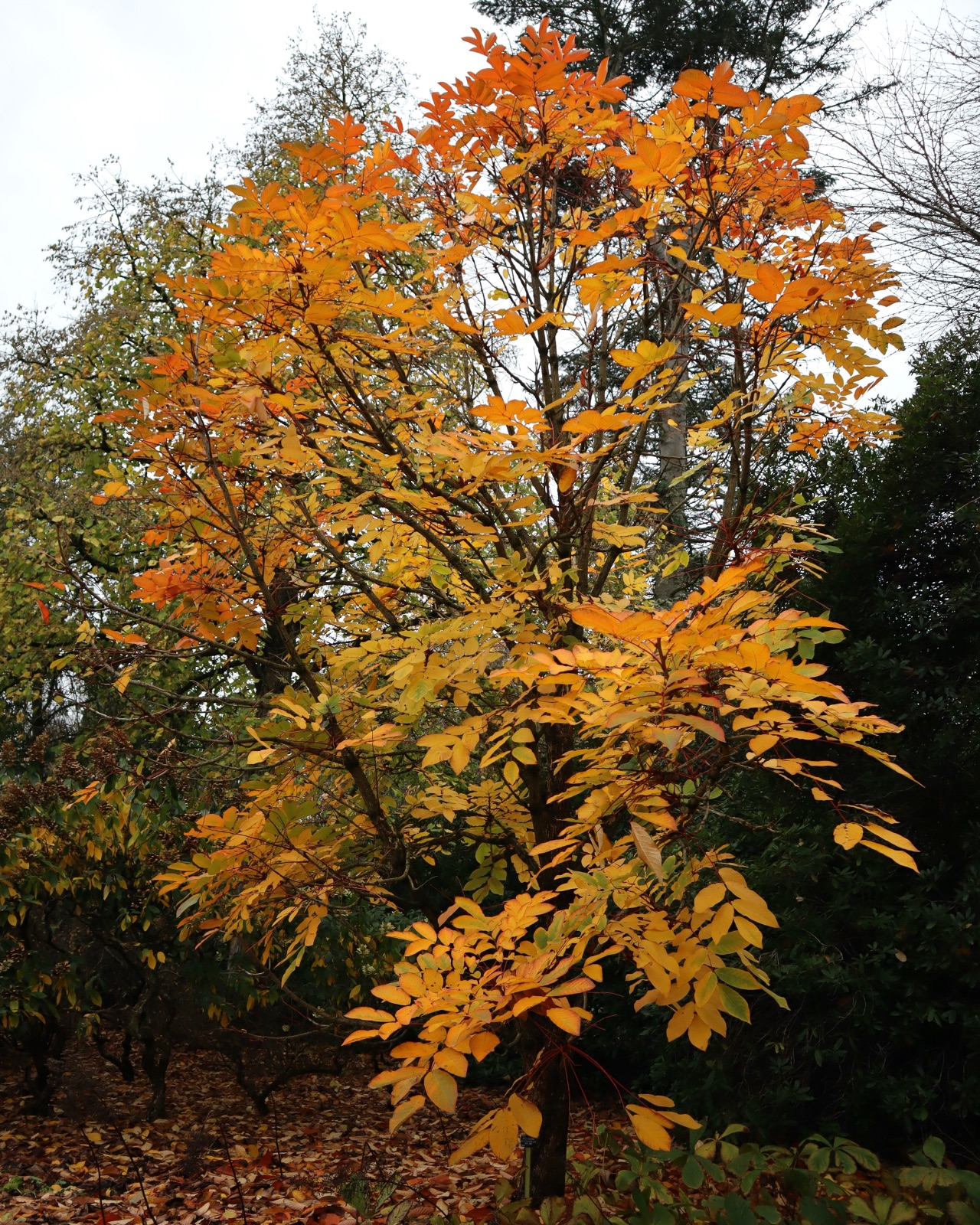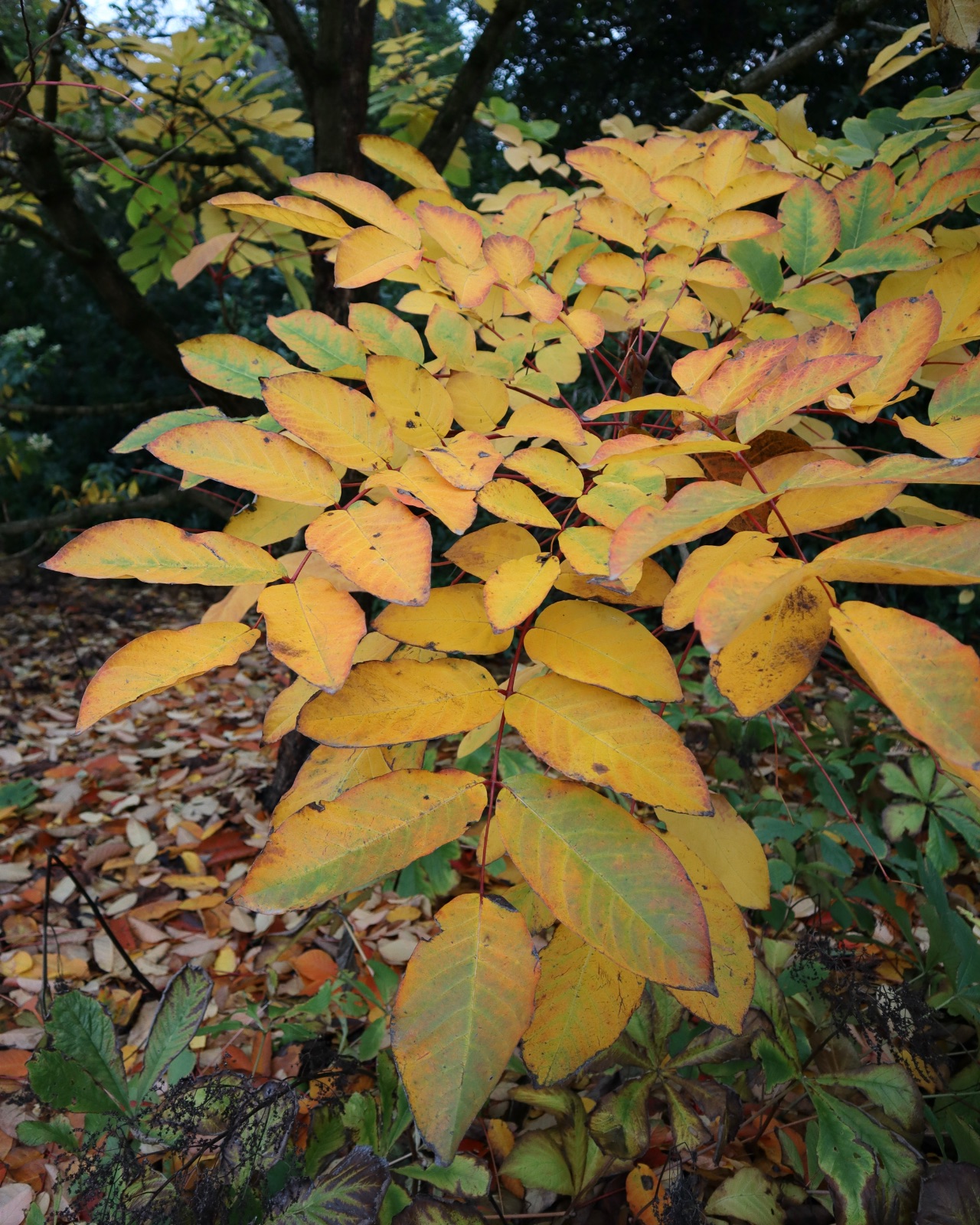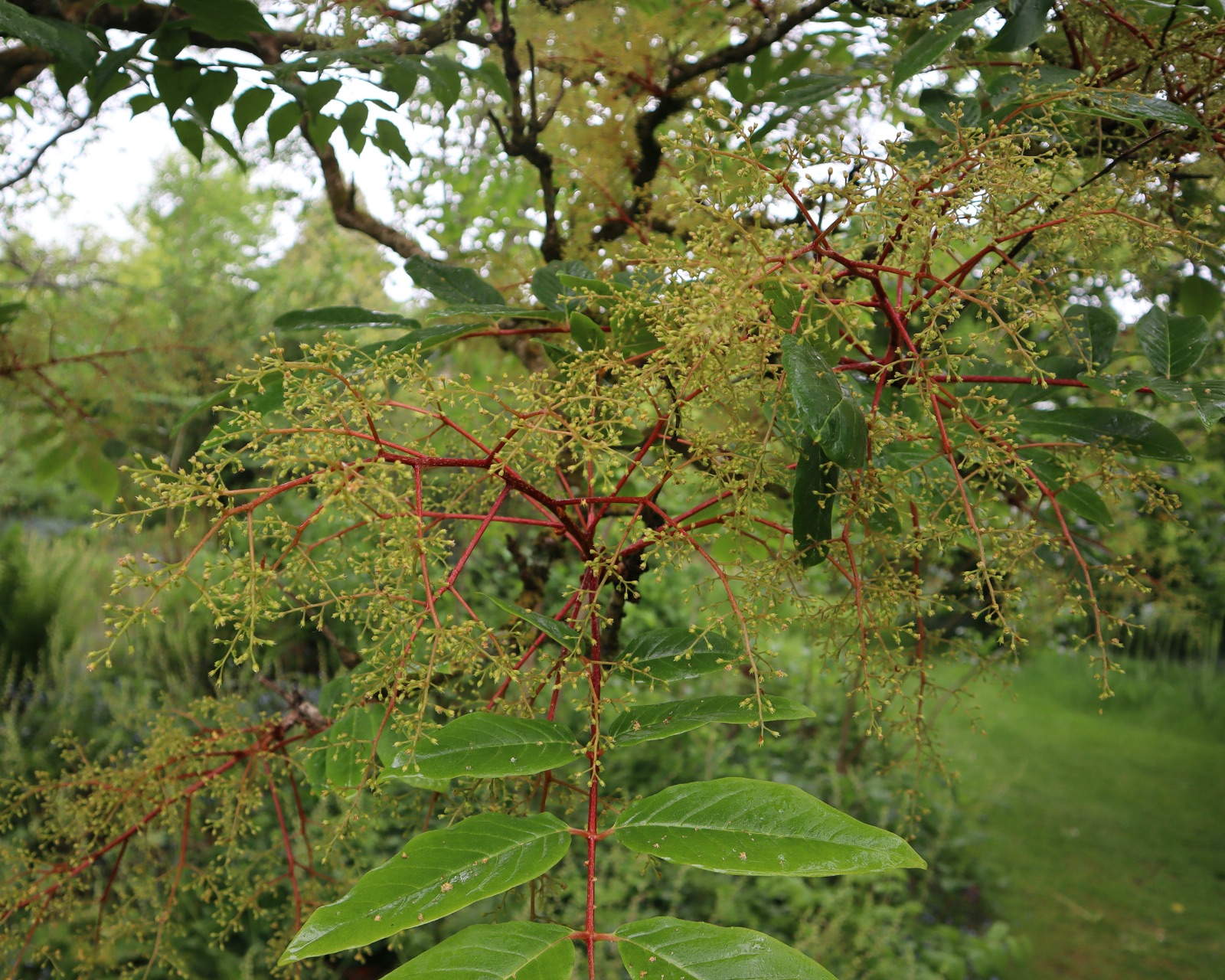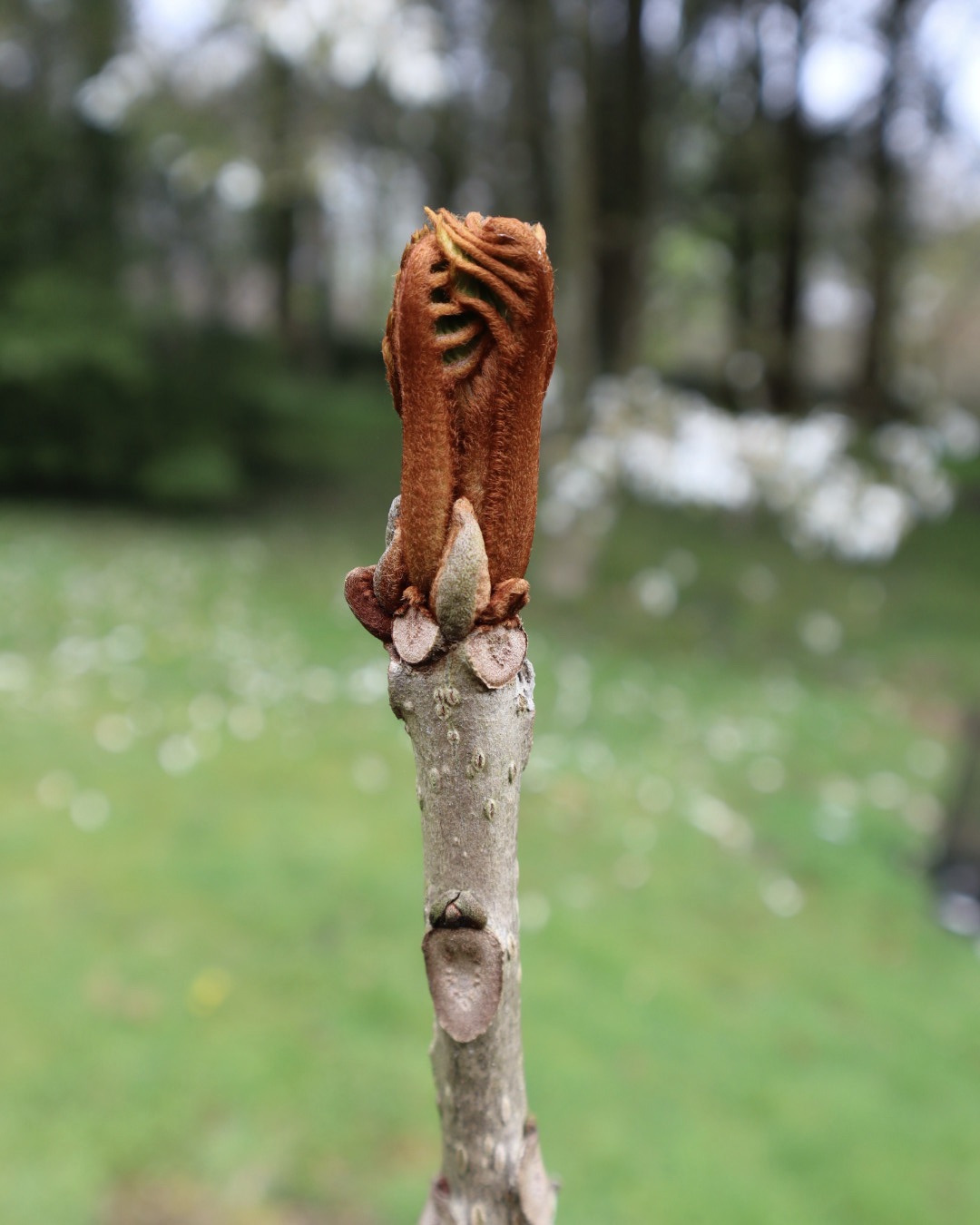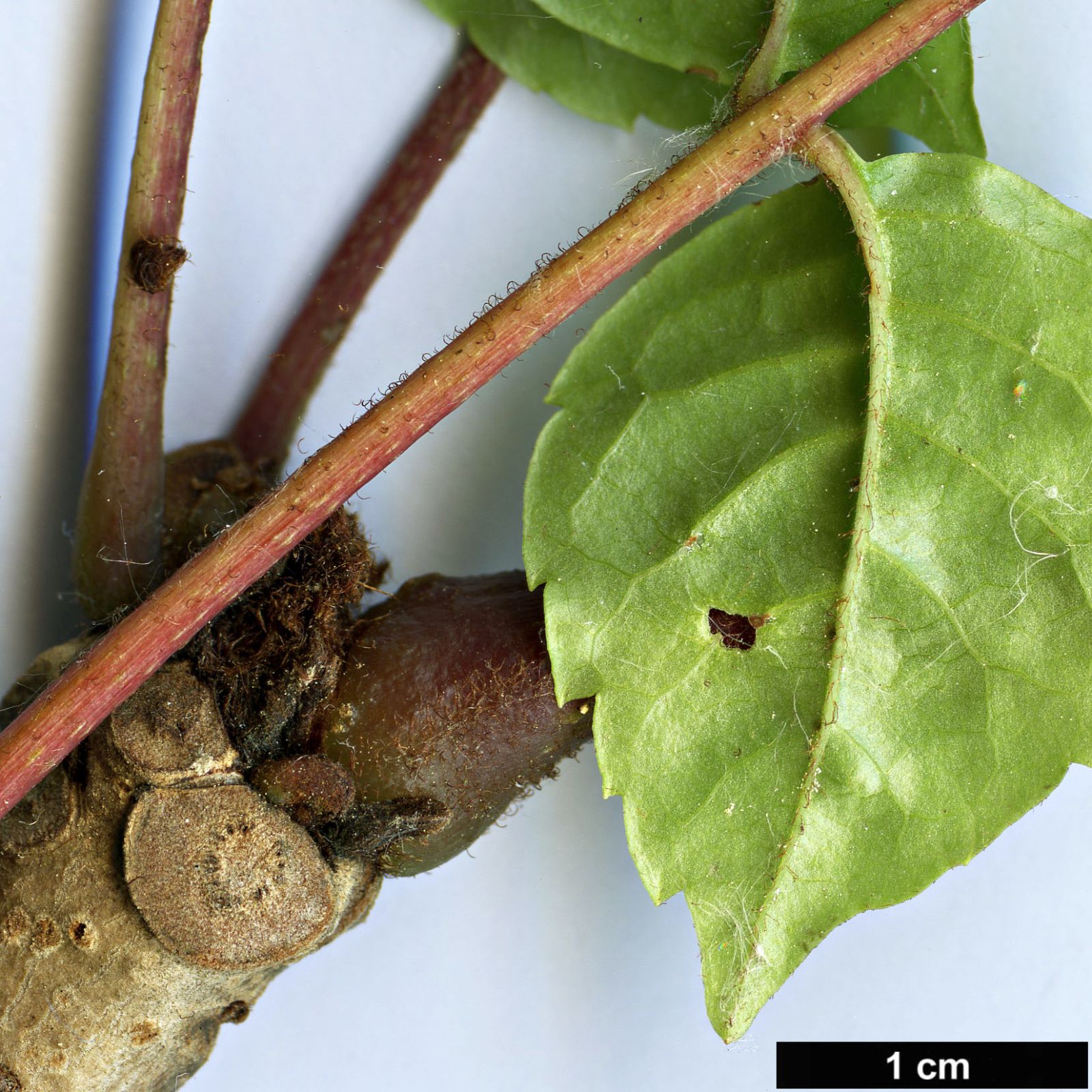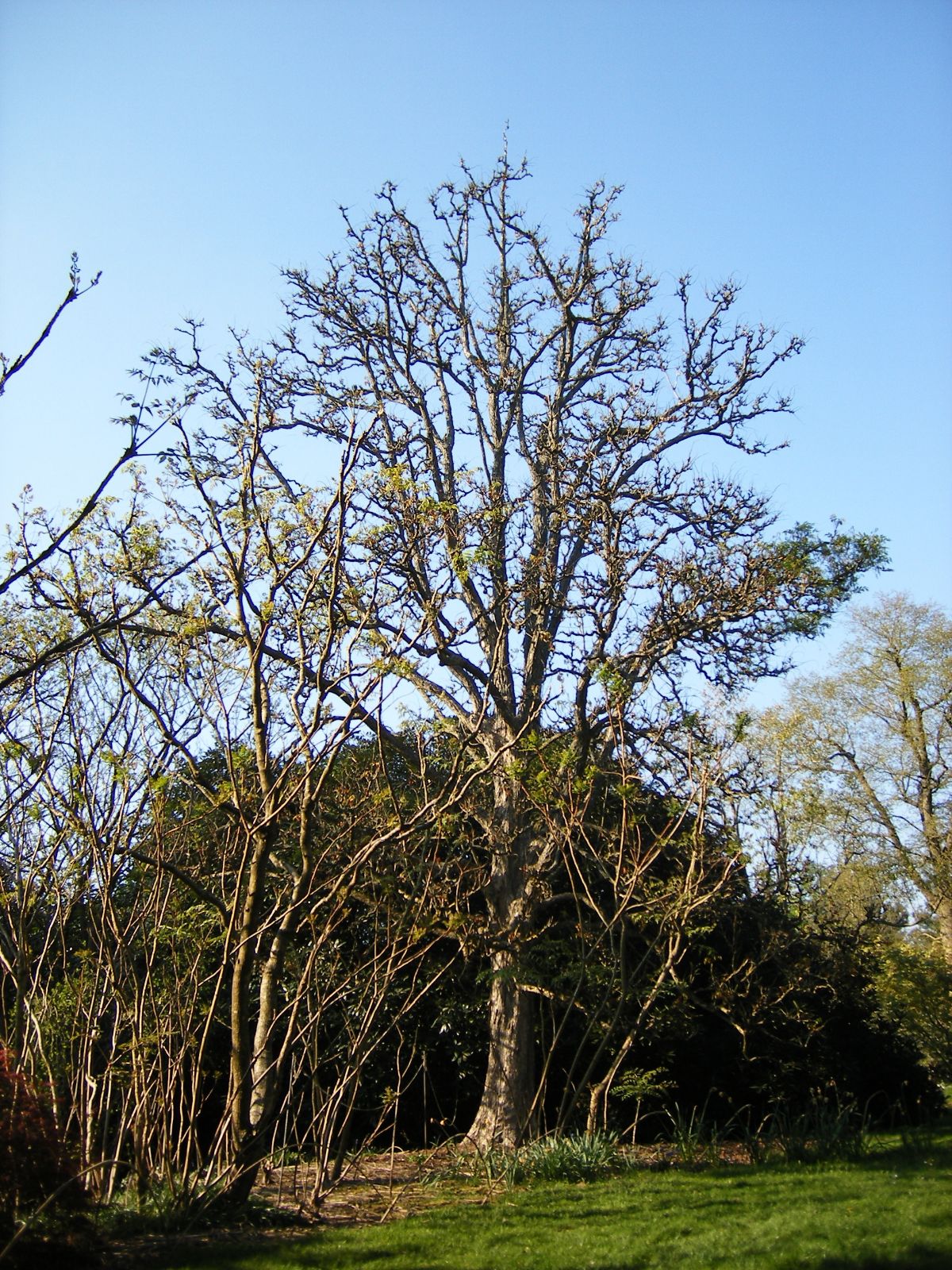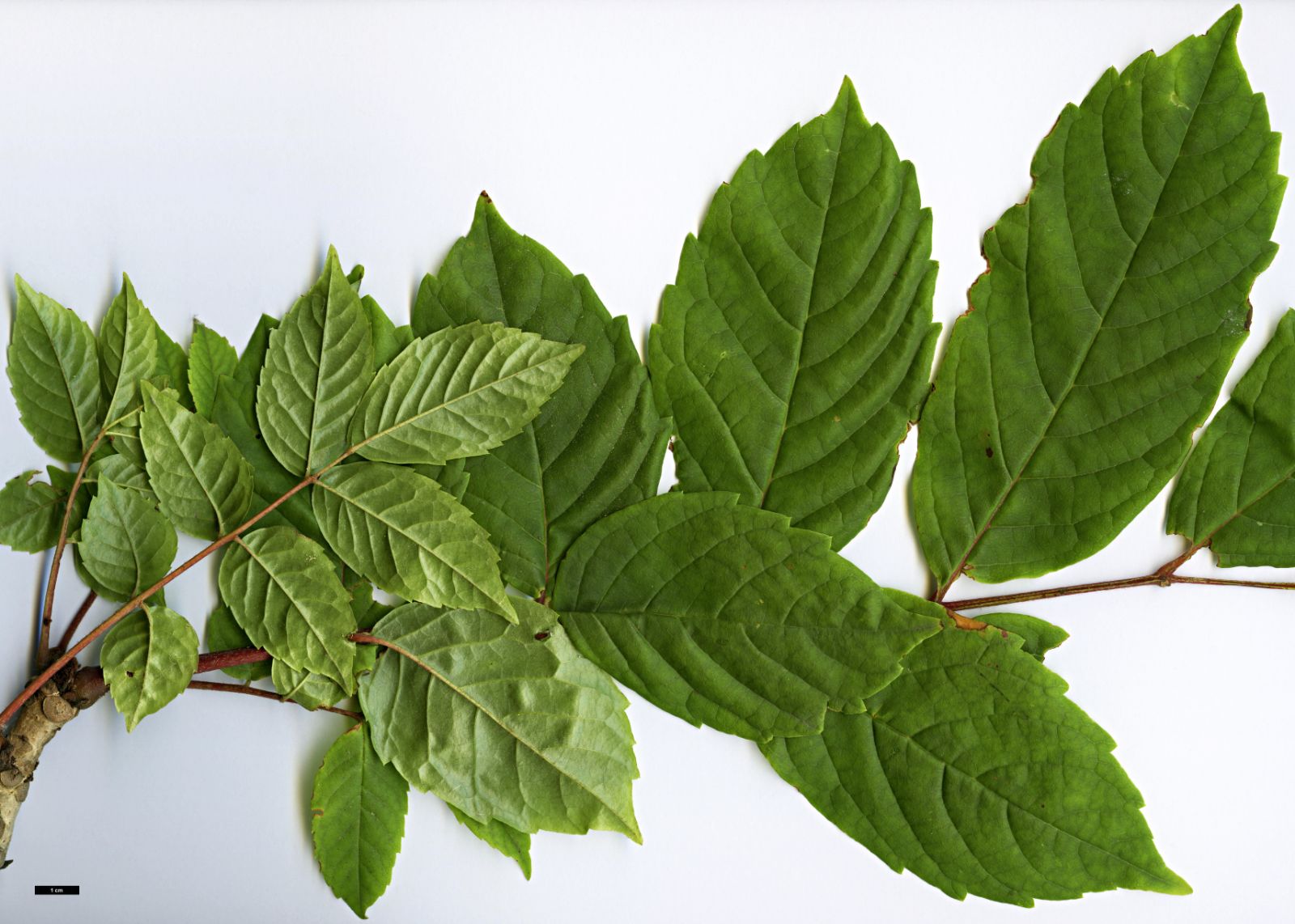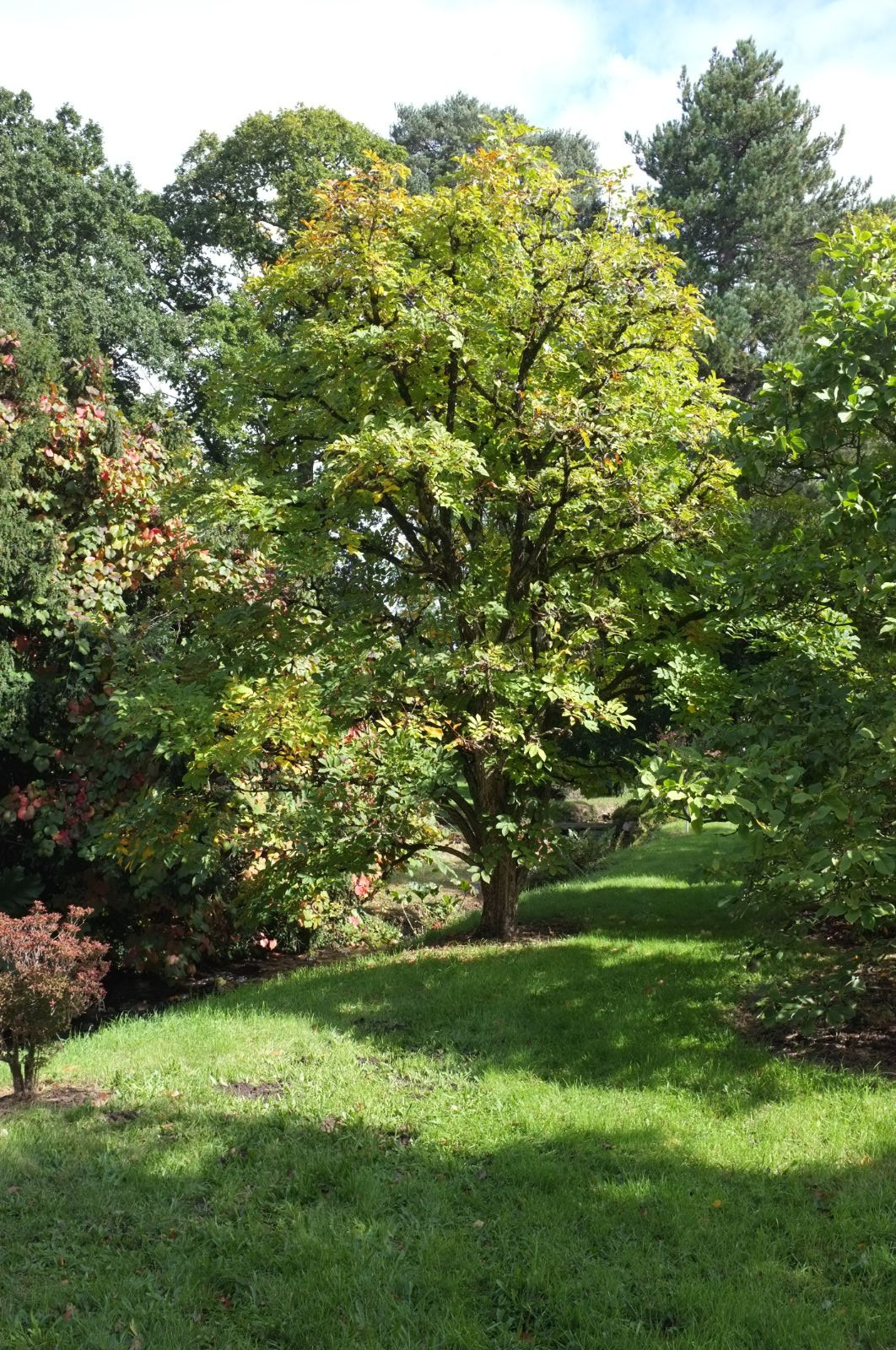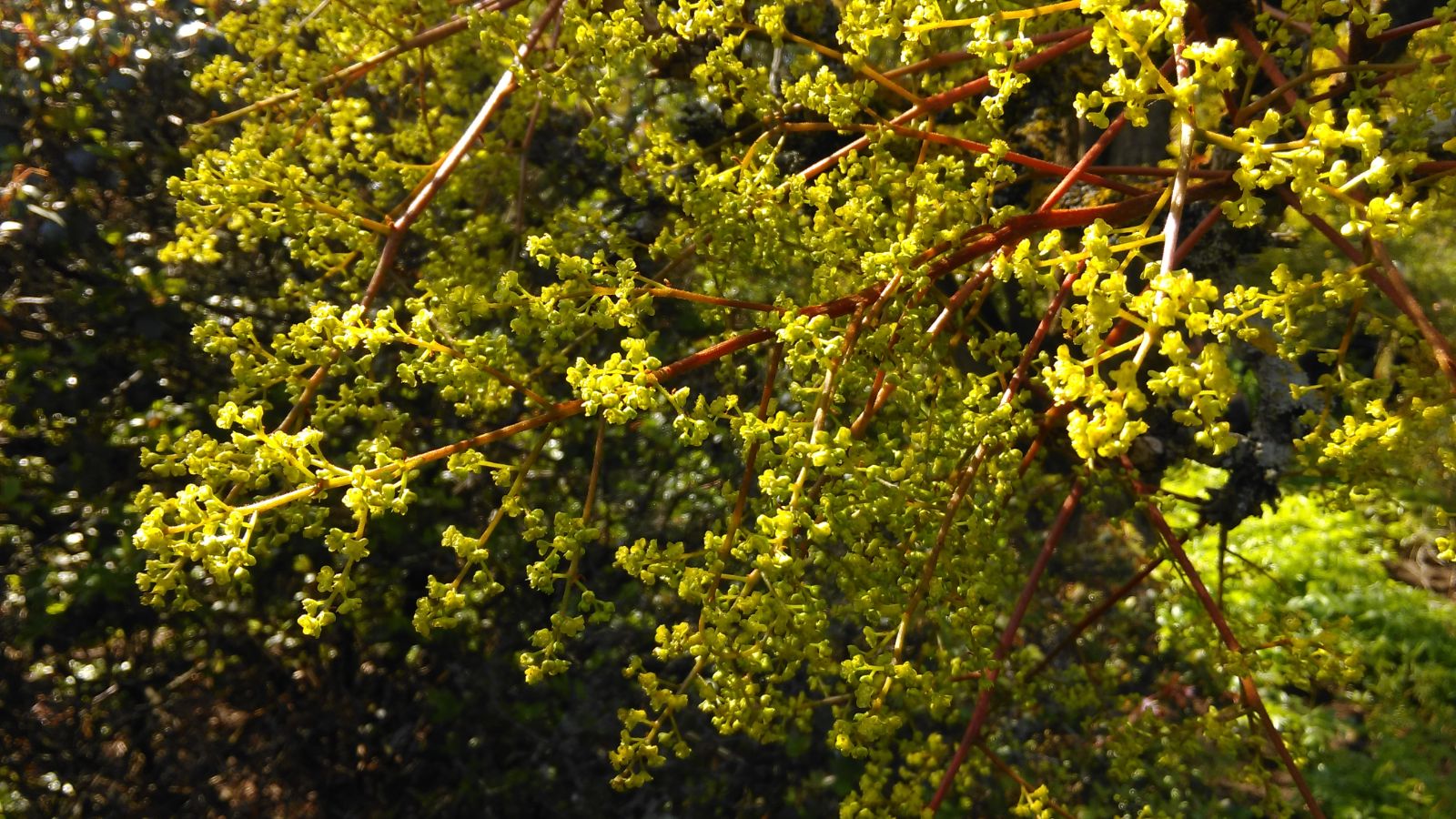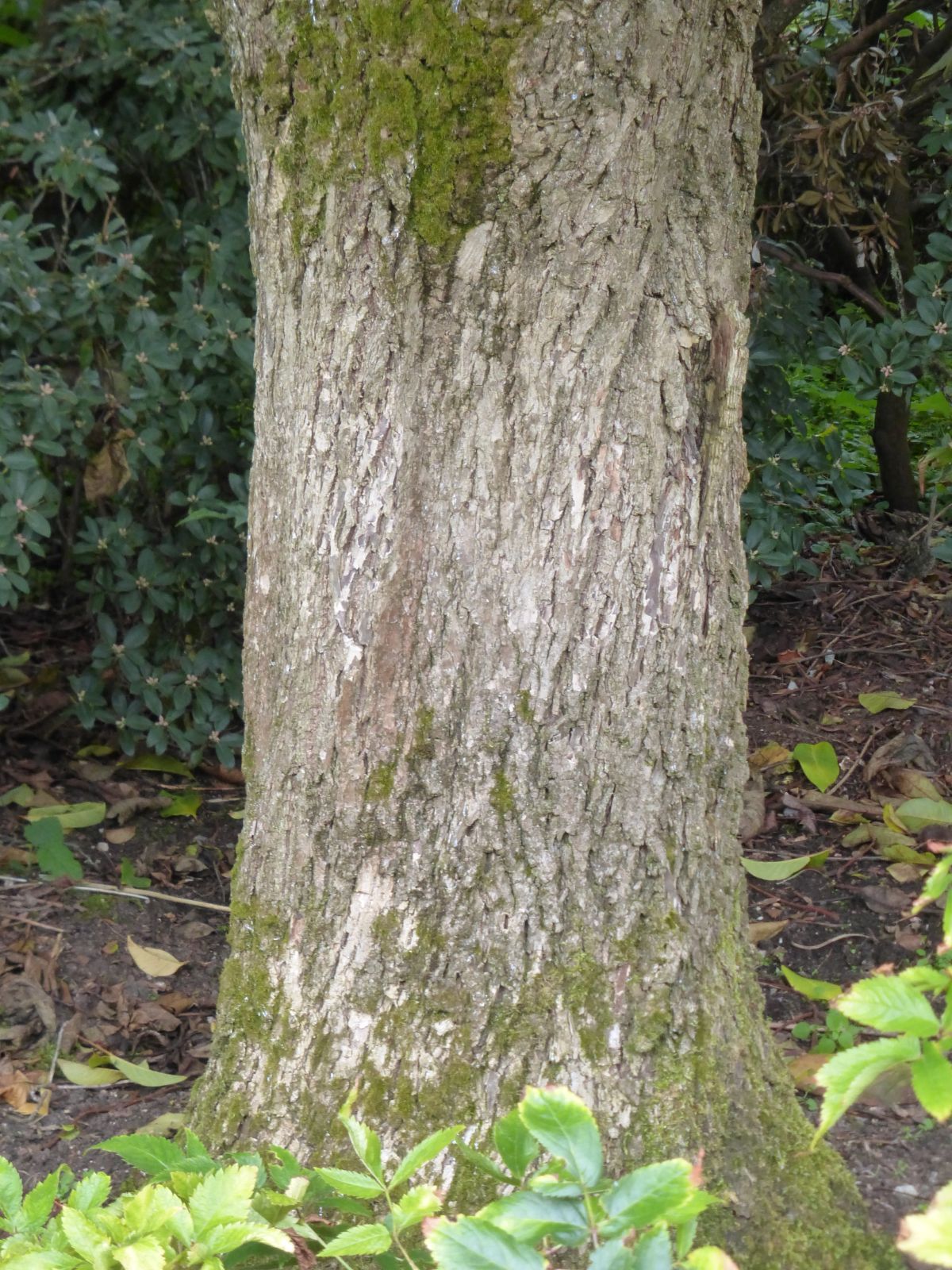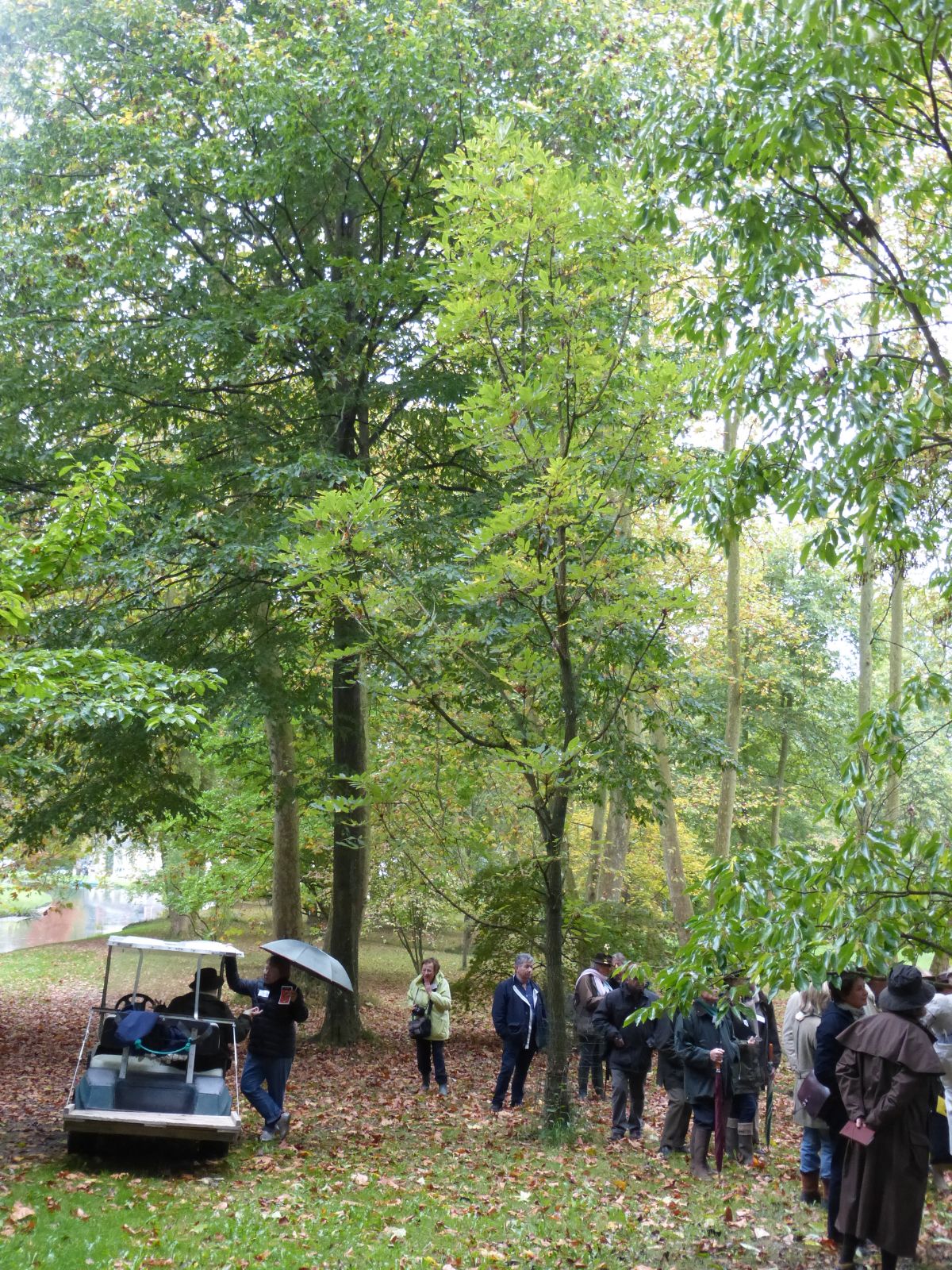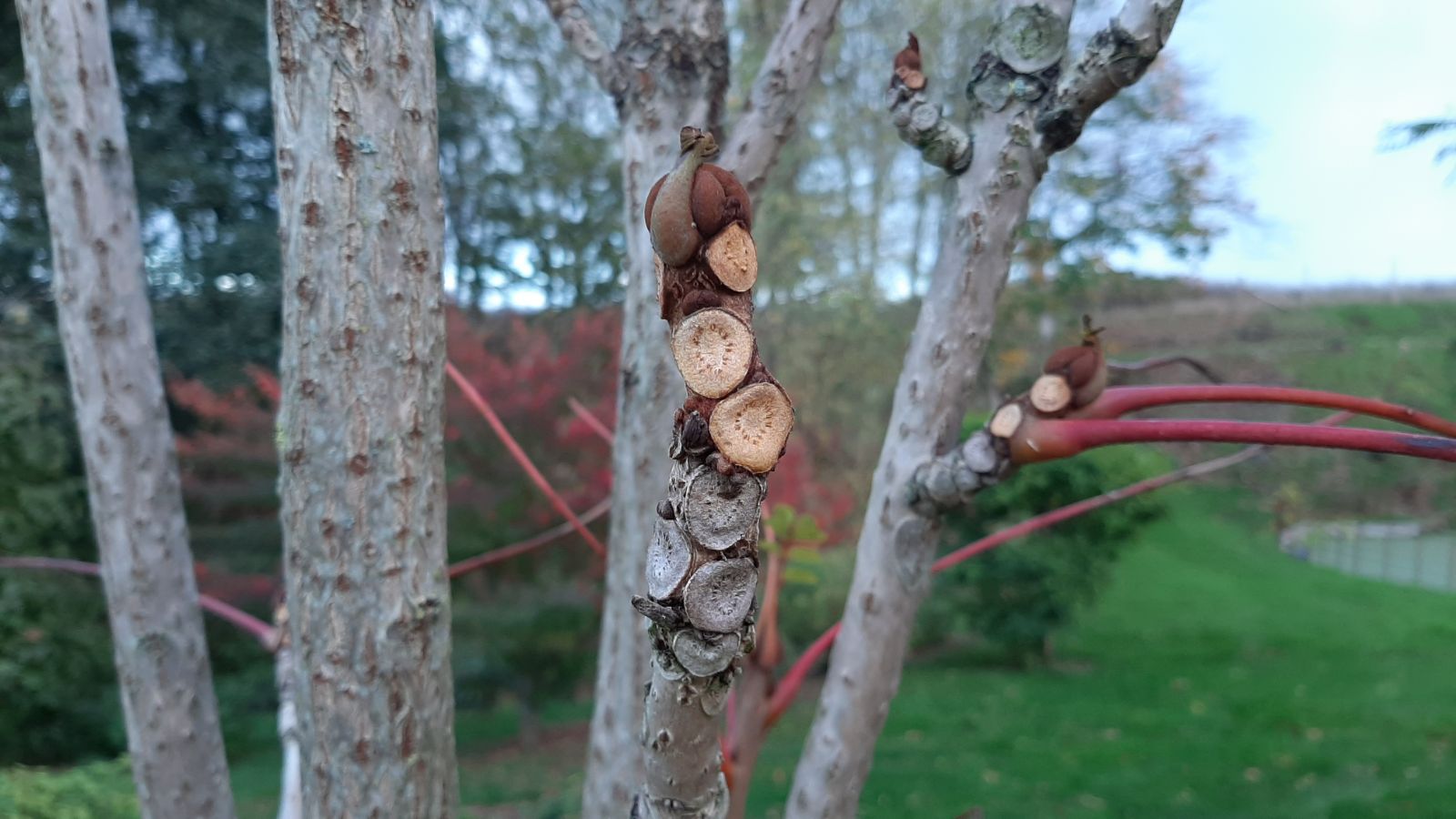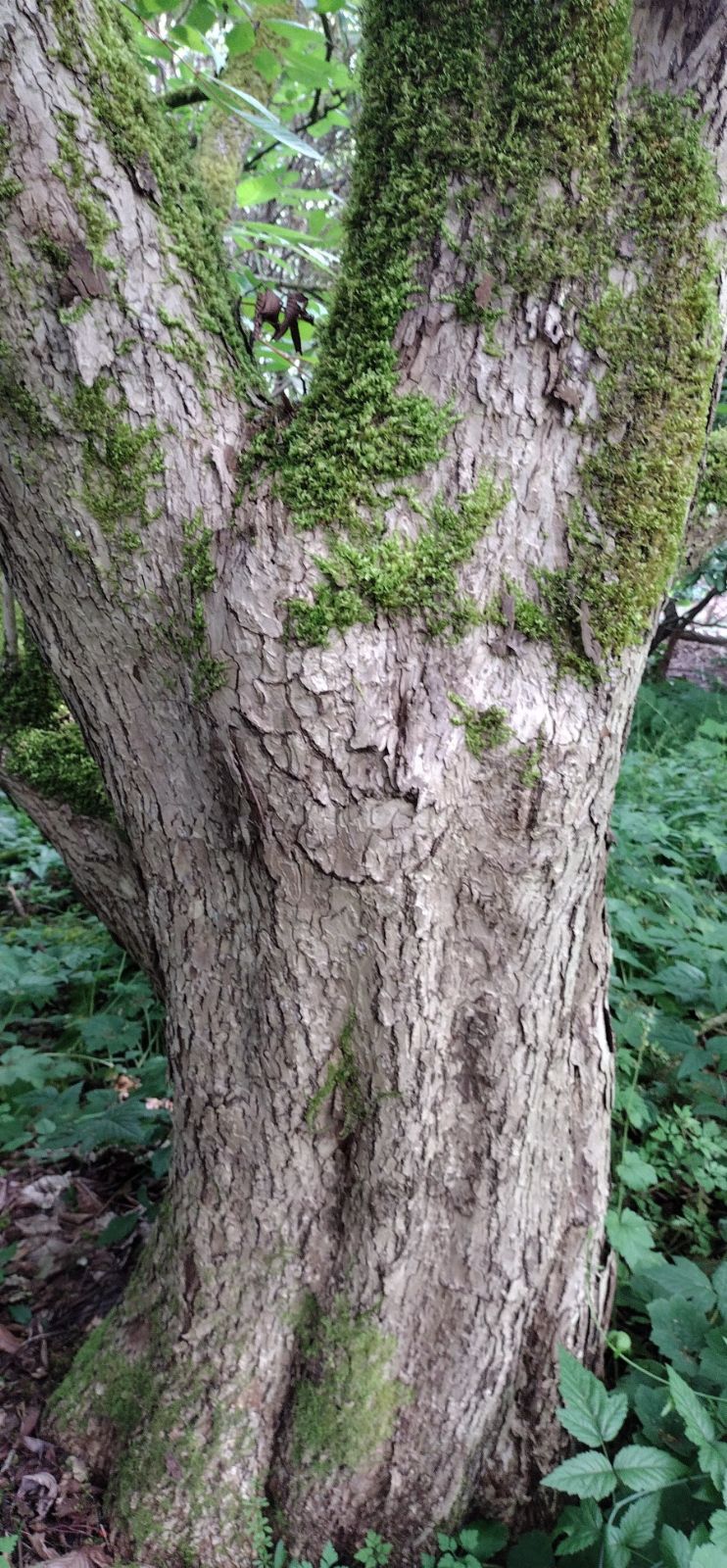Meliosma veitchiorum
Sponsor
Kindly sponsored by
Lady Diana Rowland
Credits
Owen Johnson (2022)
Recommended citation
Johnson, O. (2022), 'Meliosma veitchiorum' from the website Trees and Shrubs Online (treesandshrubsonline.
Genus
Synonyms
- Meliosma longicalyx Lecomte
Deciduous tree to 20 m tall with stiffly ascending branches. Bark dark grey, developing rugged, predominantly vertical fissures. Twigs very stout, with thick suborbicular leaf-scars. Buds large, globose, woolly-brown; young growths covered in brownish wool. Leaf pinnate, 60–90 cm long; rachis reddish, swollen at the base; leaflets 7–11, ovate, 7–15(–20) × 4–8(–10) cm, rounded and oblique at the base and pointed towards the tip, pubescent along the veins on both surfaces but lacking axillary tufts; veins in 6–12 pairs; margin entire or coarsely serrated; stalk of terminal leaflet with a joint where the petiolule joins an extension of the rachis. Flower-head terminal, erect, very open, 40–45(–60) cm long, branched 4(–5) times, with prominently lenticular stems. Sepals 4(–5). Petals white, to 3.5 mm wide. Fruit subglobose, 1–2 cm wide, ripening violet. Flowers (in the wild) in May, fruits August–September. (Guo & Brach 2007; Bean 1981).
Distribution China S Anhui, NE Guizhou, Henan, Hubei, Hunan, S Shaanxi, Shanxi, Sichuan, N Yunnan, N Zhejiang
Habitat Humid forests, 1000–3000 m asl.
USDA Hardiness Zone 6
RHS Hardiness Rating H5
Conservation status Least concern (LC)
The largest-leaved member of its genus was introduced to England by Ernest Wilson in 1901 (Bean 1981), and in the UK at least it has become the most widely grown Meliosma. Cynics might suggest that this is because its name has remained stable throughout its time in cultivation, but it seems well-adapted to the climate of north-west Europe and is certainly a spectacular foliage plant; it is late into leaf and seldom damaged by spring frost (Stewart 2022). Autumn colour can be a good mix of amber and orange (Hall 2015). Mature trees produce their tall, airy panicles of late spring blossom quite readily, and the large, violet-bloomed ‘berries’ are also the showiest of any hardy Meliosma. Like many trees with dramatically large leaves, the tree becomes gaunt and skeletal in winter – some would say ugly – the rugged bark helping to suggest a very regal kind of elder; the plant’s habit of producing clusters of leaves just at the shoot-tips can give an impression that it is retrenching and even moribund, but this seems a natural part of its physiology. The big, woolly, naked winter buds resemble drumsticks (van Beusekom 1971).
The UK and Ireland champion, in 2012, grew at Kildangan Castle in central Ireland and was 15 m tall with a bole 79 cm thick at 80 cm; another almost as good, far to the east at Nymans in West Sussex, was 14 m × 53 cm dbh in 2016 (Tree Register 2022). Wales’ best example, 12 m × 43 cm dbh, grows behind a retirement home in the centre of Bridgend and is a relic of the mid-twentieth century garden of Christopher Fraser-Jenkins (Tree Register 2022). As far north as the Royal Botanic Garden Edinburgh, an eight-metre tree planted in 1952 in an open spot flowers regularly.
There have been several reintroductions in recent decades, and a specimen from SICH 1829 at Wakehurst Place was already 11 m tall by 2021 (Tree Register 2022). Although Wakehurst is a large estate, trees from this introduction were crammed together on the precipitous north-facing bank of the densely wooded Westwood Valley, and this Meliosma group has flourished in extraordinarily low light-levels. Another 8 m tree from the same collection, in the Savill Garden at Windsor, produces fertile seed without any others to pollinate it (J. Anderson pers. comm.), providing one of several examples of apomixis within this genus. At Burncoose Nursery, the ripe fruits from an original 1921 planting at Caerhays Castle are collected and sown in cold frames, where they can take up to two years to germinate (Burncoose Nurseries 2022; Tree Register 2022). An 11 m tree at Howick Hall in Northumberland was grown from UK seed supplied by Mallet Court Nursery in 1984 (Tree Register 2022). Seedlings and young plants do need to be protected against deer and rabbits, as the bark and foliage are very palatable (Burncoose Nurseries 2022, J. Grimshaw pers. comm. 2022). In the wild, the species seems to be rather scarce, though not threatened, and is reported to be infertile near the limits of its range (van Beusekom 1971).
In continental Europe this tree seems very rare, but was offered in 2022 by Herrenkamper Gärten in Germany (Herrenkamper Garten 2022). In western North America, it is one of a variety of Meliosma cultivated at the David C. Lam Asian Garden of the University of British Columbia in Vancouver (Mosquin 2014), and had reached 11 m at the Washington Park Arboretum in Seattle by 1993 (Jacobson 1996). Far Reaches Farm, also in Washington State, offers plants from H2MD 115 (Far Reaches Farm 2022). In the more continental climate of Washington D.C. (hardiness zone 7a), a good upright young tree grows in the United States National Arboretum (Stewart 2022).



